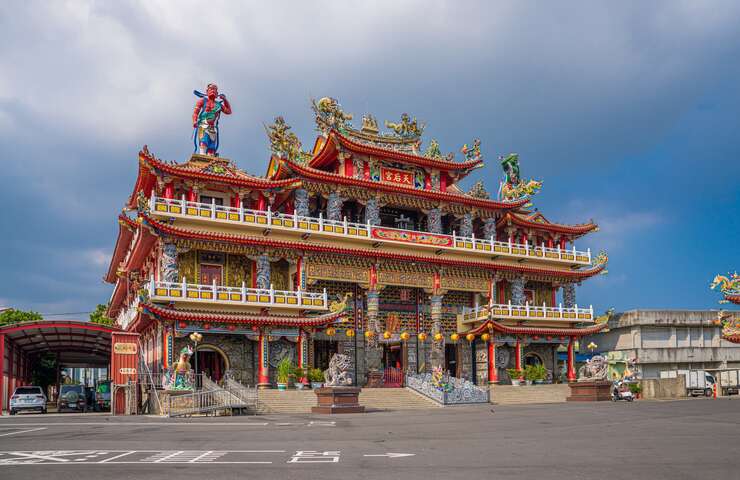Tianhou Temple, Luzhu, Kaohsiung Introduction
During the Kangxi period, the number of settlers in the Luzhu area gradually increased. After their lives became more stable, they built a Tianhou Temple on the current Zhongshan Road in 1671. After many renovations and expansions, the number of worshippers grew. However, with the changes of the times and the development of Luzhu's streets, the temple space gradually became insufficient and there was no room for further expansion. Thus, in 1979, under the guidance of the Holy Mother, a new temple was built while retaining the old temple in the urban area, resulting in the coexistence of both old and new. The new temple, also known as the Daitianhou Temple in Luzhu, is the largest temple in Luzhu, primarily dedicated to the Heavenly Holy Mother, the sea guardian Mazu. It is the most important religious center in Luzhu. The new temple is designed in the Minnan style, standing three stories tall, and its vast temple courtyard gives it a remarkable and majestic presence. On both sides of the temple are two deities who serve under Mazu: Qianliyan (Thousand-Mile Eyes) and Shunfeng'er (Smooth Wind Ears). The dragon statue in the main hall of the temple hosts an annual event called "Passing Through the Dragon's Throat" during Mazu's birthday. Participants enter through the dragon's mouth and exit through the dragon's tail, which is believed to sweep away misfortune and ensure safety, making it a unique blessing activity of the Luzhu Tianhou Temple.































